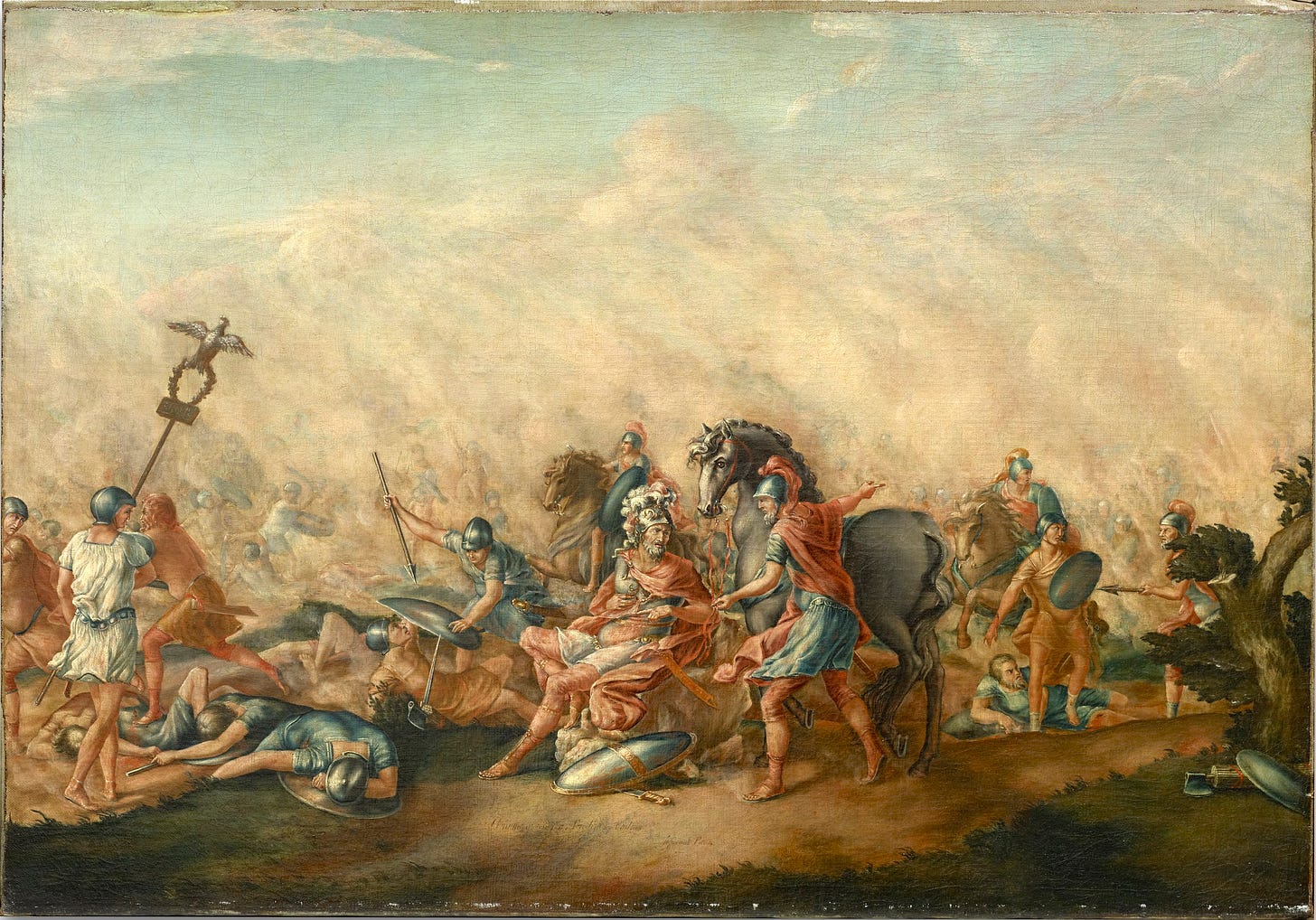Today in History: July 31-August 2
The Chinese Civil War begins, Iraq invades Kuwait, and more
This is the web version of Foreign Exchanges, but did you know you can get it delivered right to your inbox? Sign up today:
Hello again! This is our last one of these before Foreign Exchanges returns to regular programming on Tuesday. See you then!
July 31, 1941: The invading Wehrmacht defeats the Soviet Red Army at the Battle of Smolensk, part of World War II’s Operation Barbarossa. Though a fairly stunning German tactical victory, leaving over 400,000 Soviet soldiers killed or wounded and over 300,000 captured, strategically Smolensk contributed to the overall collapse of the Nazi invasion of the USSR. The stiff Soviet resistance caused German leaders to slow down their advance on Moscow, which gave the Soviets time to strengthen their defenses around the city and contributed to the attrition of the German army. The subsequent Battle of Moscow ended in a significant Soviet victory.
July 31, 1991: US President George H. W. Bush and Soviet President Mikhail Gorbachev sign the Strategic Arms Reduction Treaty (known as “START” or “START I” to distinguish it from subsequent efforts). The first treaty to oblige both superpowers to verifiably reduce their nuclear arsenals, START limited each country to no more than 6000 deployed nuclear warheads (though it imposed no limit on the number of inactive warheads). Having carried over from the Soviet Union to Russia, START expired in 2009 and was superseded by “New START,” signed in April 2010 by US President Barack Obama and Russian President Dmitry Medvedev. That latter treaty is due to expire next year and at this point it looks like it will not be replaced and both countries will be free to go wild with their nuclear arsenals.
August 1, 1798: The Battle of the Nile
August 1, 1927: The Nanchang Uprising marks the start of the Chinese Civil War between the Kuomintang and the Communist Party. In a direct response to the Shanghai Massacre of April 12, in which right-wing KMT forces purged CCP members from their ranks (and killed thousands of them, though the final casualty figures are disputed), a CCP army captured Nanchang, home of the Revolutionary Committee of the Chinese Nationalist Party. This was one of several CCP uprisings around the country. The Communists (or Left-KMT if you want to be a stickler about it) seized weapons and ammunition but, realizing they couldn’t hold the city against a Right-KMT counterattack, withdrew on August 5 and undertook what became known as the “Little Long March” south to Guangdong province (this didn’t go nearly as well for them as the later Long March would). China’s People’s Liberation Army dates its founding to this uprising.
August 2, 338 BCE (or thereabouts): Philip II of Macedon defeats a Greek army organized by Thebes and Athens at the Battle of Chaeronea. The outcome effectively ended any chance of Greek resistance to a Macedonian takeover. After harshly punishing Thebes, Philip engaged in heavy diplomacy to win over Athens and Corinth and isolate Sparta. He managed to unite most of the Greek city-states behind him in what historians call the “League of Corinth,” which he believed was essential in order to fulfill his plans to invade the Persian Empire. Philip didn’t live long enough to lead that campaign, but his son Alexander picked up where dad left off.
August 2, 216 BCE (or thereabouts): At the Battle of Cannae in southeastern Italy, the Carthaginian general Hannibal annihilates a much larger Roman army in what has often been regarded as the closest thing to a total military victory in history. Hannibal’s cavalry outflanked and completely encircled the Roman infantry in an early example of a pincer movement, then attacked from all sides. Of the 86,000 or so Roman soldiers who began the battle (to about 50,000 for Hannibal), Livy says that the Carthaginians killed 67,500 and that’s the low estimate. Polybius cites a death toll of over 85,000. Included among the dead was Lucius Aemilius Paullus, one of the Roman consuls for that year.

August 2, 1934: Paul von Hindenburg dies and is succeeded as President of Germany by Adolf Hitler, who prefers to go by the title “Führer.” What could go wrong?
August 2, 1945: Quite a bit, as it turns out. The Potsdam Conference ends with US President Harry Truman, British Prime Minister Clement Atlee, and Soviet Communist Party General Secretary Joseph Stalin reaching agreement on a plan to demilitarize, denazify, and administer occupied Germany following World War II.
August 2, 1964: The USS Maddox, in North Vietnamese territorial waters, exchanges fire with several North Vietnamese torpedo boats. The Gulf of Tonkin Incident, as it came to be known, along with a second alleged engagement two nights later that turned out to be fictional, kicked off the Vietnam War. Again, what could go wrong?
August 2, 1990: Iraq invades Kuwait. What could…ah, never mind.

